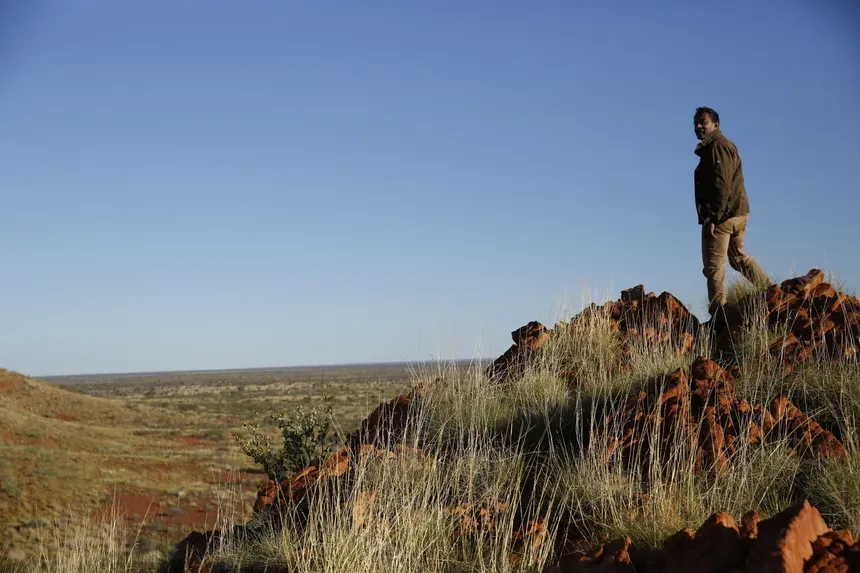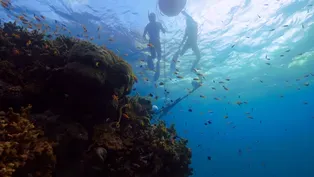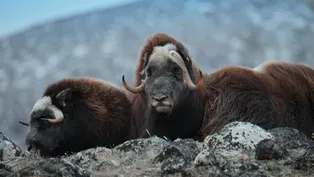
The Troublesome Cane Toad Invasion In Australia
Clip: Season 2 Episode 2 | 2m 30sVideo has Closed Captions
M. Sanjayan investigates the biodiversity around Cairns Airport and meets the cane toad.
M. Sanjayan investigates the biodiversity around Cairns Airport and encounters the infamous cane toad. This amphibian has wreaked havoc on the biodiversity of Australia by eating its way through many important native species.
Problems with Closed Captions? Closed Captioning Feedback
Problems with Closed Captions? Closed Captioning Feedback

The Troublesome Cane Toad Invasion In Australia
Clip: Season 2 Episode 2 | 2m 30sVideo has Closed Captions
M. Sanjayan investigates the biodiversity around Cairns Airport and encounters the infamous cane toad. This amphibian has wreaked havoc on the biodiversity of Australia by eating its way through many important native species.
Problems with Closed Captions? Closed Captioning Feedback
How to Watch Changing Planet
Changing Planet is available to stream on pbs.org and the free PBS App, available on iPhone, Apple TV, Android TV, Android smartphones, Amazon Fire TV, Amazon Fire Tablet, Roku, Samsung Smart TV, and Vizio.

Dr. M. Sanjayan On Our Climate Future
Dr. M. Sanjayan discusses how he stays optimistic about our climate future, our role in climate change, his climate heroes, and more.Providing Support for PBS.org
Learn Moreabout PBS online sponsorshipIn Australia, the Rangers survey the biodiversity around Cairns Airport.
To date, they have identified 12 threatened species in the area.
“Every few meters, we seem like ” “we're into a different species of mangroves, ” “different species of tree composition, ” “and then these little patches of ” “rainforest, it's quite diverse.
” “That's why it's really important ” “to keep these ecosystems ” “healthy, because we know ” “those species are endangered.
” I started this Australian journey in the desert where to keep that fragile ecosystem healthy, the community is waging war on cats and camels.
Here, the enemy is smaller but equally dangerous.
“So that is the famous ” “Australian cane toad ” “...and this guy, innocuous as he looks, ” “has decimated wildlife here in Australia, ” “but also other islands.
” “Initially introduced to deal with a beetle that was, ” “you know, eating up cane fields.
” “That's why they call them cane toads, but obviously ” “they didn't really fancy the beetles ” “but fancied pretty much ” “everything else and anything ” “that can fit into this giant ” “wide mouth... itll eat.
” “So baby birds, eggs, ” “insects, little animals, little marsupials.
” “This little guy is big trouble.
” Trouble that needs to be minimized.
Normally, if found in nature reserves, Rangers euthanize the toads to reduce their impact on other species.
In my lifetime, we've destroyed half the world's mangrove forests.
The degradation of our coastal ecosystems could be releasing up to 1 billion tons of carbon dioxide into the atmosphere each year While growing new mangroves could also be a part of the long term solution.
We must do what we can to protect the mature carbon-rich mangroves we have left.
Global wetlands matter, if we're going to limit the temperature of our planet.
Listening In On the Ocean's Orchestra
Video has Closed Captions
Clip: S2 Ep2 | 2m 13s | Professor Steve Simpson monitors the sounds of biodiversity on reefs in the Maldives. (2m 13s)
Monitoring Muskoxen Births in Arctic Greenland
Video has Closed Captions
Clip: S2 Ep2 | 3m 3s | Dr. Niels Martin Schmidt's team are monitoring muskoxen in the frozen northeast. (3m 3s)
Providing Support for PBS.org
Learn Moreabout PBS online sponsorshipSupport for PBS provided by:













